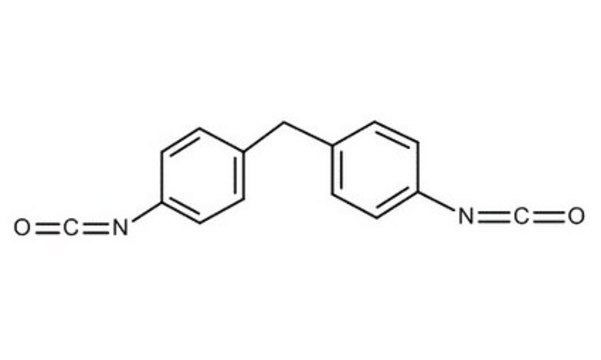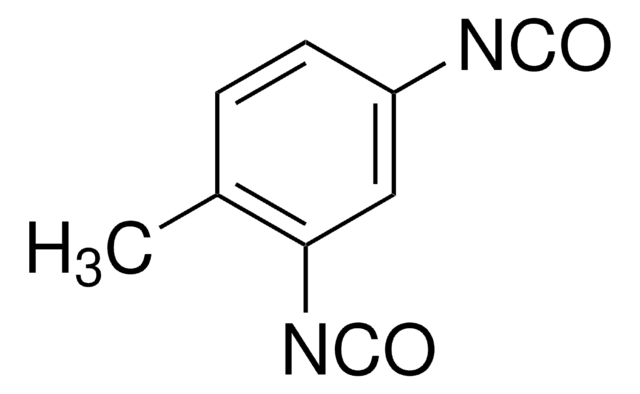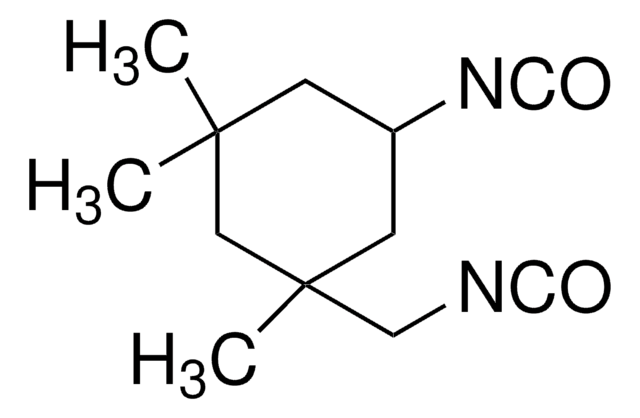372986
Poly[(phenyl isocyanate)-co-formaldehyde]
average Mn ~340
Synonym(s):
PAPI 2027, PMDI, Polymethylene polyphenyl isocyanate
About This Item
Recommended Products
vapor density
8.6 (vs air)
form
liquid
specific activity
~2.7 isocyanate groups/molecule
mol wt
average Mn ~340
refractive index
n20/D 1.628
viscosity
180 cP(25 °C)(lit.)
bp
200 °C/5 mmHg
density
1.2 g/mL at 25 °C (lit.)
SMILES string
[H]C([H])=O.O=C=Nc1ccccc1
Looking for similar products? Visit Product Comparison Guide
General description
Application
Signal Word
Danger
Hazard Statements
Precautionary Statements
Hazard Classifications
Acute Tox. 4 Inhalation - Carc. 2 - Eye Irrit. 2 - Resp. Sens. 1 - Skin Irrit. 2 - Skin Sens. 1 - STOT RE 2 Inhalation - STOT SE 3
Target Organs
Respiratory system, Respiratory system,Eyes,Lungs
Storage Class Code
10 - Combustible liquids
WGK
WGK 1
Regulatory Information
Choose from one of the most recent versions:
Already Own This Product?
Find documentation for the products that you have recently purchased in the Document Library.
Our team of scientists has experience in all areas of research including Life Science, Material Science, Chemical Synthesis, Chromatography, Analytical and many others.
Contact Technical Service
![Poly[(phenyl isocyanate)-co-formaldehyde] average Mn ~400](/deepweb/assets/sigmaaldrich/product/structures/319/634/60a69bae-e14c-4356-983b-a2c362dcdeec/640/60a69bae-e14c-4356-983b-a2c362dcdeec.png)








